
The Cloisters Last Supper/Madonna and Geisha Pieta
The artist statement:
In my decade long pictorial investigations into the Catholic clergy sex abuse issues, I am considering the cultural issues and the implications around human rights and equality for women, respect for individuals and diverse perspectives versus institutionalized views about humanity and oppressive attitudes about difference. The series reflecting these concerns is Masami Teraoka Project: The Cloisters Last Supper/Inversion of the Sacred/Triptych Paintings Project 2004 – 2015.
The fact that women had been oppressed by male chauvinistic institutions such as the Vatican since the inception of the church is a question that has arisen for me during the process of making the triptych paintings. What if Adam had eaten the mythological apple instead of Eve 2000 years ago? How might the history have been different?
The Vatican and other institutions still try to dictate what women should do with their bodies and sexuality. Women in my narrative paintings predominate in the compositions and they assert their sexuality without shame. The women I portray have a healthy and natural relationship to their bodies. Their experience is by no means sinful. I was appalled to learn that the Vatican recently proclaimed that ordination of women for priesthood is considered as criminal as pedophilia.
Issues of social justice expressed through the idea of human equality have always been at the top of my priority list for subject matter in my artwork. I have wondered how the Catholic Church’s teaching of celibacy fit into Michelangelo’s Sistine Chapel painting? How could the nudity depicted in those masterpieces support anti gay and anti same sex marriage? Today the medieval ancient Catholic Church meets a new generation of I-Phone and I-Pad culture that should open up a dialogue. The painting titled Cloisters Last Super Table is an imagined space for such a conversation. My table provides a new chapter for Adam, who has eaten the mythological apple and that history begins today.
Having been concerned with aesthetics and ideas in my work since I began working in watercolor more than 40 years ago, I continue in this vein in the narrative oil paintings, creating a fantastical world where human folly and foibles are expressed in such a way that the beauty and ugliness of human activity and the human psyche thrive in a complex visual poetry.
- Masami Teraoka
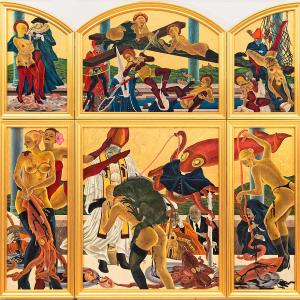
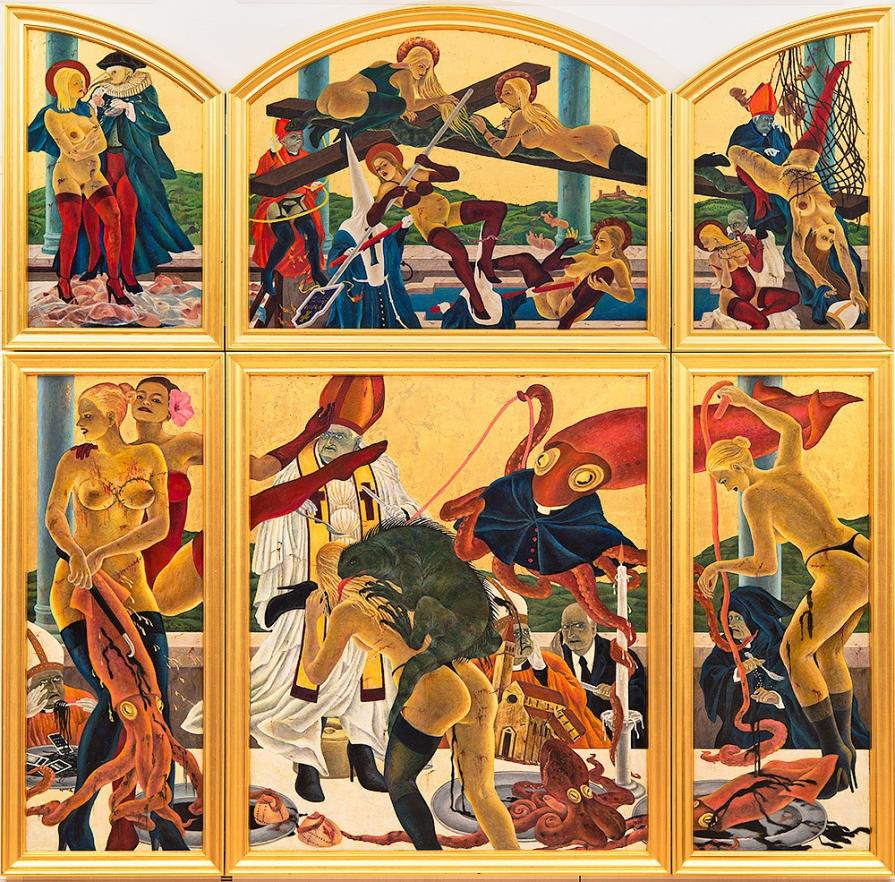
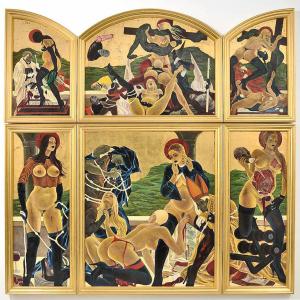



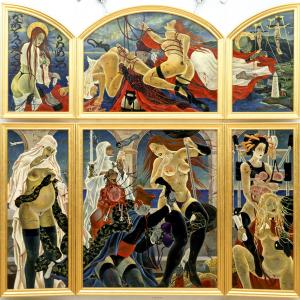








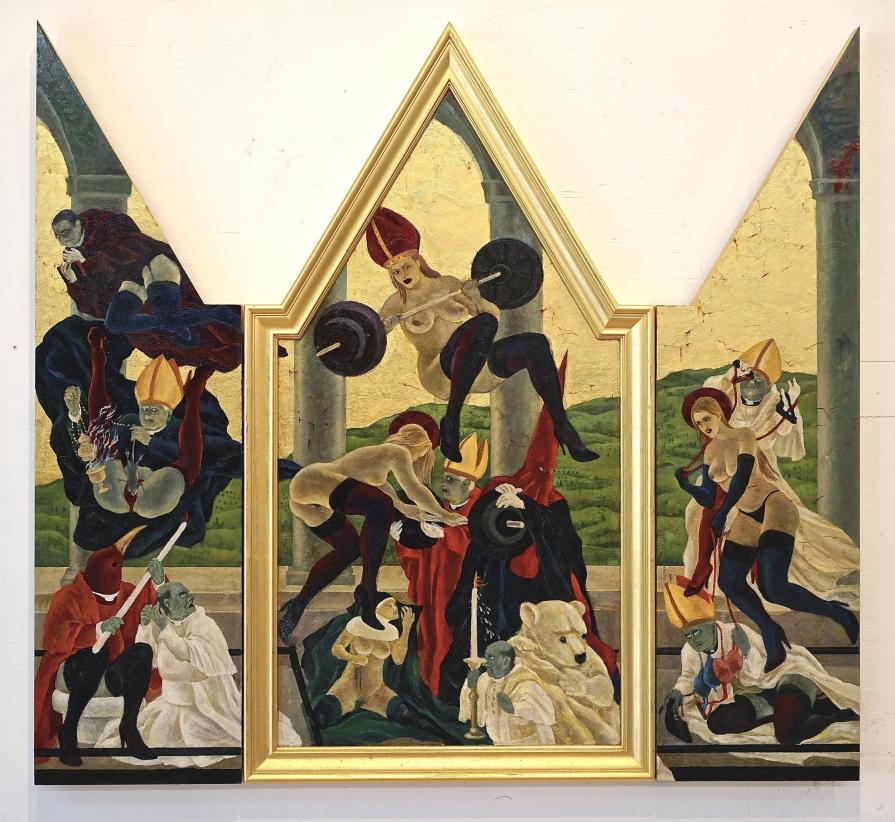
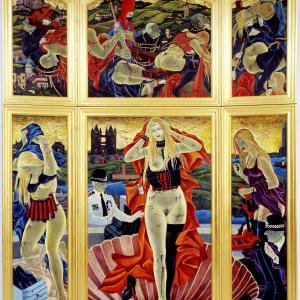























Comments 5
Say something